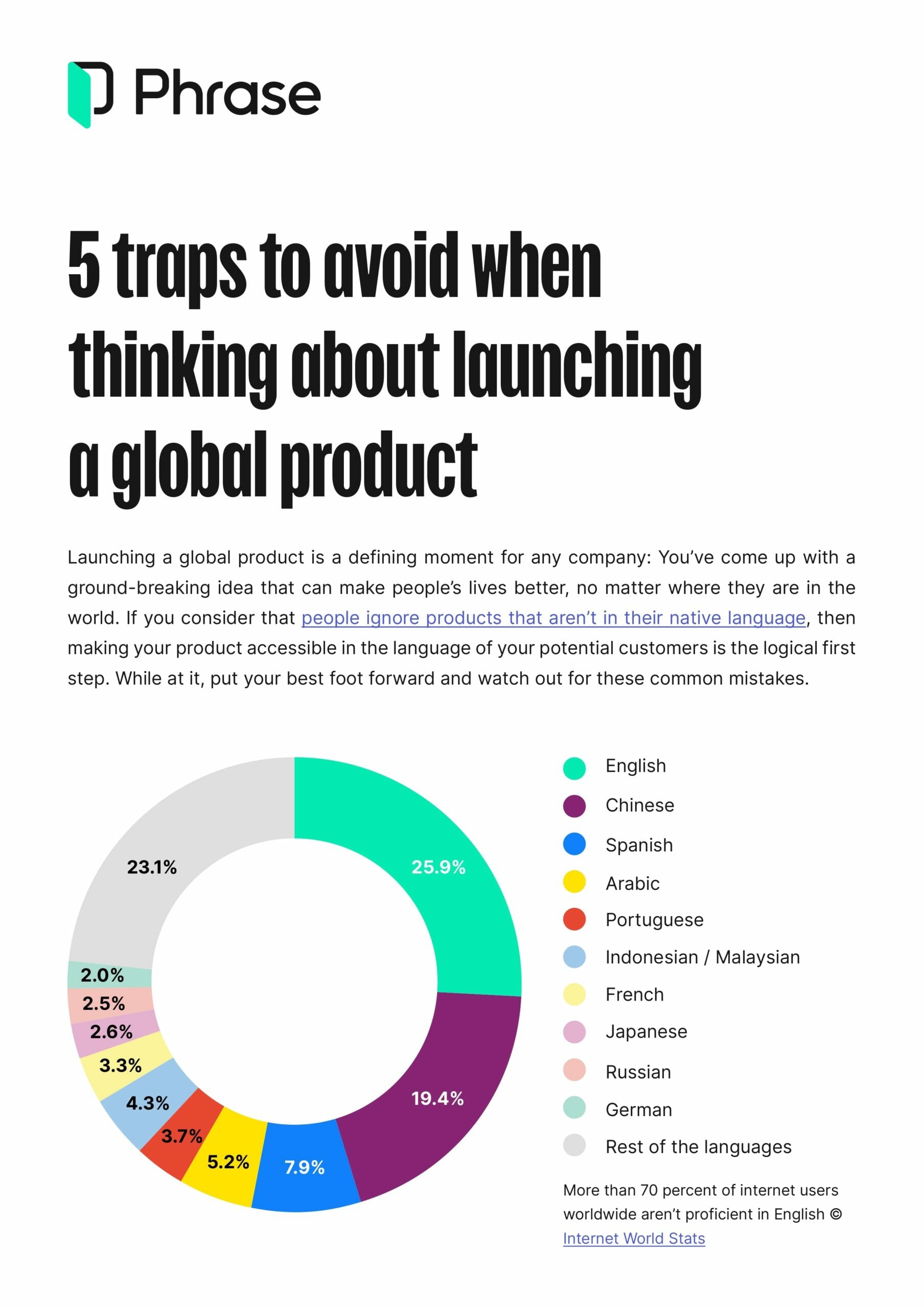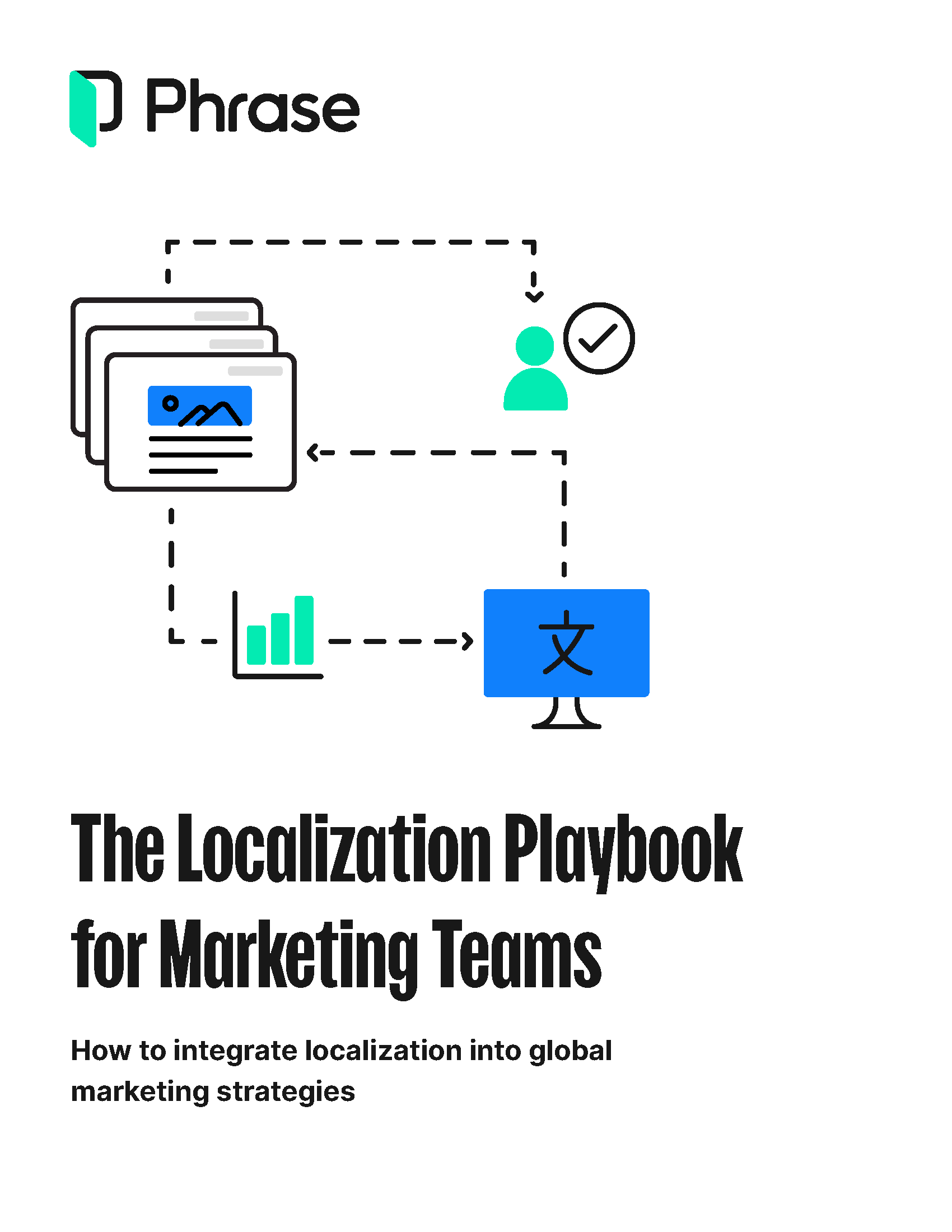Global business
Global Expansion Unveiled: A Blueprint for Tech Enterprises

Amidst a worldwide surge of tech innovations and ever-shifting consumer trends, pursuing global expansion isn’t just wishful thinking—it’s a crucial move for any tech company aiming to grow and thrive.
However, global expansion comes with its fair share of hurdles and requires a keen understanding of market dynamics and meticulous strategic planning.
Follow this guide to gain insight into common challenges faced by tech companies entering international markets and learn how to navigate them for lasting success.
The challenges of global expansion
The path to expanding into new markets is well-known for being inherently complex. The good news is— others have successfully navigated it and so can you—as long as you’re aware of the challenges that may arise venturing beyond your domestic market. Let’s explore some of the common difficulties associated with strategically expanding a company’s global footprint.

FREE DOWNLOAD
5 traps to avoid when thinking about launching a global product
Most people ignore products in languages that they don’t speak, so give yourself the best chance of success by avoiding these 5 common mistakes in global expansion.
Market saturation and competition
Many tech companies are surfing the wave of innovation. They have a never-before-seen, cutting-edge product and want to be the first to create—and conquer—their market segment. However, when expanding globally, they find the market is already saturated with half a dozen similar solutions and the competition from both global and local players is fierce. It’s a reality check that hits hard where it hurts.
Ideally, companies will have unique selling propositions (USPs) before going to market. In a crowded landscape of companies vying for the consumer’s attention, a clear market positioning is essential to stand out. An in-depth analysis of the competitive landscape is essential—first, you must know what your competitors are doing and then you can craft a unique approach.
Look at the global smartphone market for a telling example:
- Apple emphasizes its devices’ design and user experience (UX).
- Samsung’s focus is offering a diverse product range.
- Xiaomi’s strategy is delivering high value at affordable prices.
All of these companies have distinct approaches to capturing market share—their products are carefully tailored to their diverse audiences.
To mitigate the market saturation challenge, companies can work on 2 parallel tracks: Follow market trends to adapt their offerings and anticipate future demand for surprising, innovative products. The old tech cliche is true—being a leader and not a follower is all about staying ahead of the curve.
Varying consumer behavior and preferences
No 2 users are the same. So many variables influence user engagement with products and user preferences—the user interface (UI) design, the language a brand uses to convey its message, the payment options it offers on checkout, and more. If market expansion is on your strategic roadmap, be prepared to encounter rich cultural diversity in your audiences and reflect diversity in your product design.
For example, consider the differences in communication preferences between Western and Asian markets. While Western users prefer straightforward and clean interfaces, Asian users typically appreciate more information-dense designs.

Understanding these nuances is crucial for adapting products and tailoring marketing strategies to resonate with local audiences. Understand customer needs and wants, research user expectations and preferences, and incorporate them into your product development and marketing efforts. By doing so, you can increase the likelihood of creating a remarkable UX that encourages customers to return for more.
Shifts in global dynamics
In the ever-changing global economy, tech companies navigate countless challenges, from supply chain disruptions to changing legislation to fluctuations in consumer spending. Addressing these challenges requires a proactive approach to mitigate risks and safeguard the bottom line.
Consider, for example, the impact of the COVID-19 pandemic on global supply chains. Companies relying on a single-source supply chain faced significant disruptions, leading to delays, increased costs, and potentially dissatisfied customers. In response, successful companies diversified their supply chains and adopted technologies like blockchain for enhanced transparency and resilience.
Additionally, rising operating costs and volatility in the stock market are motivating companies to optimize their cost structures continuously. Automation and artificial intelligence (AI) have proven instrumental in streamlining operations and reducing costs. Companies like Amazon and Alibaba leverage AI for logistics optimization, enhancing efficiency and mitigating the impact of rising operational expenses.
5 key strategies for successful global expansion
The major tech players didn’t just skyrocket to success in a day. They started with something innovative, kept adjusting, and took it market by market—finding that perfect balance between user experience and meeting market needs.
Here are 5 strategies to help you unlock your company’s full potential on the global stage.
Understand local markets
Start from the beginning: do your research and develop a nuanced understanding of local markets. This will typically involve more than just exploring consumer preferences via A/B testing or other similar market research methods—it requires delving into regulatory landscapes and socio-economic factors specific to each market (e.g., spending power, access to digital infrastructure, literacy levels, etc.) as well as the competitive environment.
For example, when Uber expanded into India, it not only had to adapt its app to local languages and payment methods but also navigated complex regulatory challenges. Uber’s success in India was not solely based on its global model but on its ability to tailor its services to meet local needs, such as introducing cash payments and focusing on the auto-rickshaw segment.
Additionally, be aware that tailoring your product to match local preferences isn’t the only adaptation you’ll need. You will also adjust marketing strategies and the communication tools you use to reach your varied audiences.
Social media platforms like Facebook and Instagram, for example, had to customize their advertising tools to align with cultural sensitivities in different regions.In different countries, people may use various channels to search for information (e.g., in China, the main search engine is Baidu, while in Korea, it’s Naver). Understanding these nuances is essential for crafting marketing campaigns that resonate with local audiences.

FREE DOWNLOAD
Make global marketing strategies work in local markets
Harness the power of localization to effectively connect with audiences worldwide and discover best practices for making your next global marketing endeavor a success.
Build an adaptable, compliant global infrastructure
Building a resilient and scalable technological infrastructure is paramount for successful global expansion. This involves more than just creating software that functions seamlessly for users—it requires knowing local regulations and compliance standards as well as having the ability to adapt to constant technology change.
Compliance with local regulations is especially critical for any operation. For example, any software company that collects and manages user data must navigate data protection laws and privacy regulations specific to each region (e.g., GDPR in Europe). Building an adaptable infrastructure involves technological considerations and legal and regulatory compliance.
Consider the case of German ERP software giant SAP. SAP operates in a closely regulated environment and understands that to be successful, products must be locally compliant—at a global scale. Their tagline “Confidently Global” shows commitment to ensuring global product coverage and local compliance.
Invest in global, diverse talent
A diverse and skilled workforce is invaluable—it adds much-needed perspective and knowledge of how the different markets work—yet you shouldn’t just go on a hiring spree and hope for innovation to spark.
Companies should foster a safe, inclusive environment that doesn’t just forgo the human for the sake of innovation. Think of it as a virtuous circle—these things have a habit of getting out there into the open, and by creating an attractive work environment, you will continue attracting even more future talent. Creating a multicultural workforce brings in varied insights. The diversity you’re onboarding is not limited to nationality but extends to different educational backgrounds, experiences, and skill sets.
Once onboarded, investing in continuous learning and development programs ensures that employees remain at the top of their games. Companies can facilitate cross-cultural training programs to enhance employees’ cultural intelligence, enabling them to navigate diverse markets effectively.
Forge local partnerships
Collaboration is at the core of successful global expansion. Establishing strategic partnerships with local businesses, whether within marketing agencies or tech firms, is pivotal. These can become your closest allies in the intricate process of planning market entry, offering invaluable insights into the nuances of the local market.
By engaging with local experts, you gain a profound understanding of the unique challenges and opportunities inherent in those markets. These individuals, deeply rooted in the local context, know how to discern what strategies work effectively and what pitfalls to avoid, serving as indispensable guides throughout your expansion journey. Moreover, strategic partnerships extend beyond mere insights—they grant access to well-established networks, augmenting your competitiveness on a global scale.
These partnerships can potentially unlock doors to previously untapped sales opportunities, providing your company with a broader and more resilient foothold in new markets. In essence, collaboration becomes a multifaceted asset, offering strategic advantages and fostering a more substantial and sustainable global presence for your business.
Adapt software to local preferences
Going the customization route is crucial to making waves in each target market. Adapting the product design and feature set to align with the local cultural, linguistic, and usability preferences creates a wholesome UX. It’s your best bet to guarantee customer satisfaction and ensure the product has a long shelf life.
The task of adapting products to a target market’s specificities and maximizing the chances of success is the domain of localization. In the tech industry, localization plays a crucial role in getting a product into the hands of users across the globe.
Consider established companies such as Microsoft or Google, or companies that appeared in the last 15 years, such as Facebook or Canva. They’re offering their products in more than 100 languages because they understand that to broaden the appeal of their products, they need to provide a seamless, naturally sounding, and culturally relevant UX.
You may not need your product to support so many languages out of the box—a measured, makes-sense approach towards language expansion is recommendable—but offering multilingual support requires a well-thought-out strategy that combines human expertise and leverages the best of what localization technology has to offer. This combination will enable you to reach a broader audience and enhance user engagement on a global scale more quickly and with confidence.

Unlock global business with the Phrase Localization Platform
Expand into new markets with all the tools you need in one technology suite for high-quality, fast, and scalable localization.
Setting out on the path of global success
Broadening your company’s global reach might seem challenging, but success stories from companies like Apple or Sony show that strategic planning, cultural sensitivity, and technological prowess can make it achievable.
- Understand your target market by researching local needs and preferences.
- Seek inspiration from your competition—there’s no harm in seeing what other successful global companies are doing.
- Bring on board the right people or collaborate with experts who have a deep understanding of the market and the technical know-how to smooth your entry into the market.
- Leverage localization to adapt your product and messaging, making sure it’s able to connect with your potential customers.
- Take advantage of cloud-based localization technology to orchestrate fully automated and seamlessly integrated workflows, supporting your global goals.
Incorporating these strategies into your global expansion roadmap will not only position your company for success from day one but also empower it to thrive in the long run.
Speak with an expert
Want to learn how our solutions can help you unlock global opportunity? We’d be happy to show you around the Phrase Localization Platform and answer any questions you may have.





